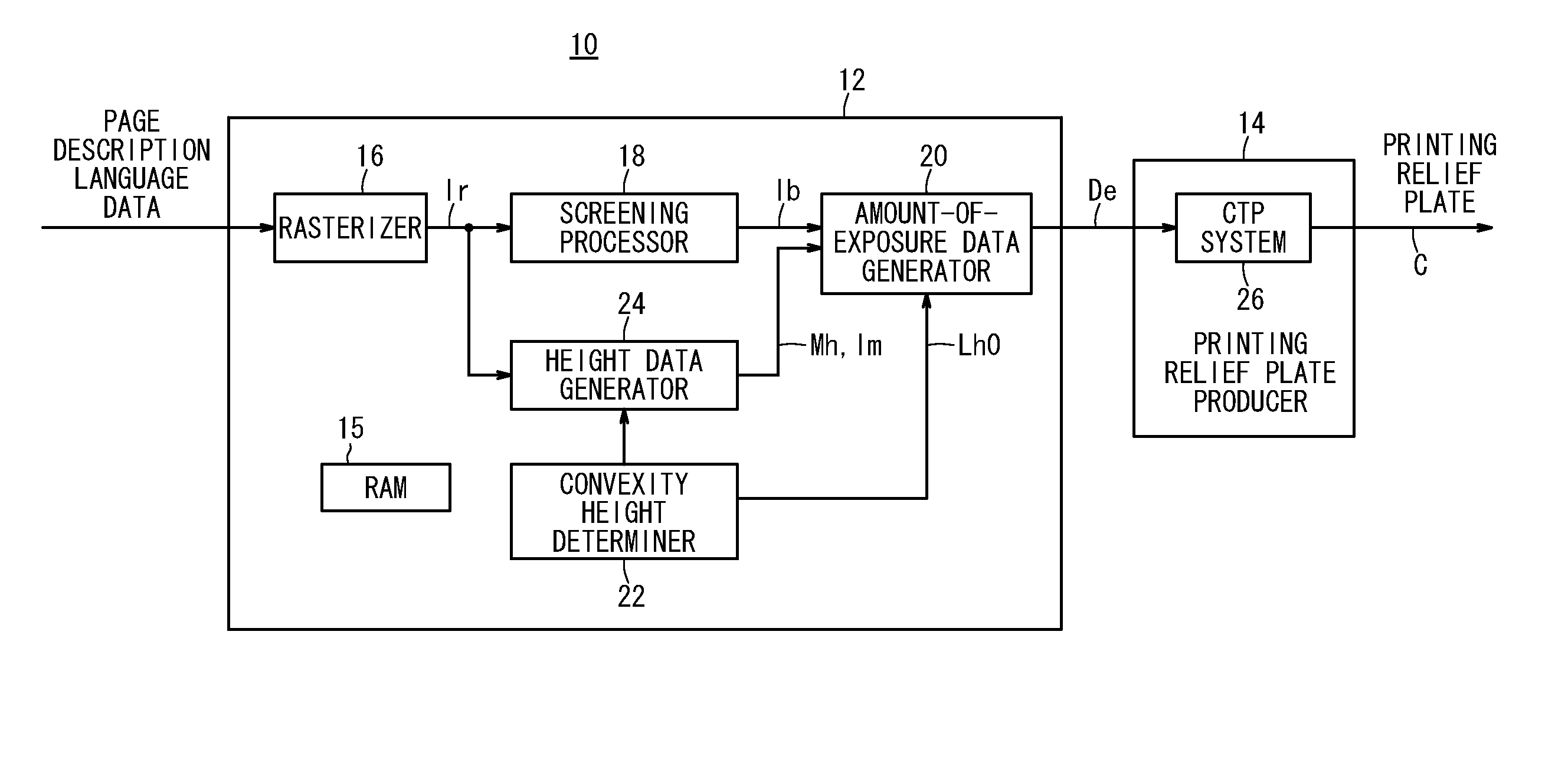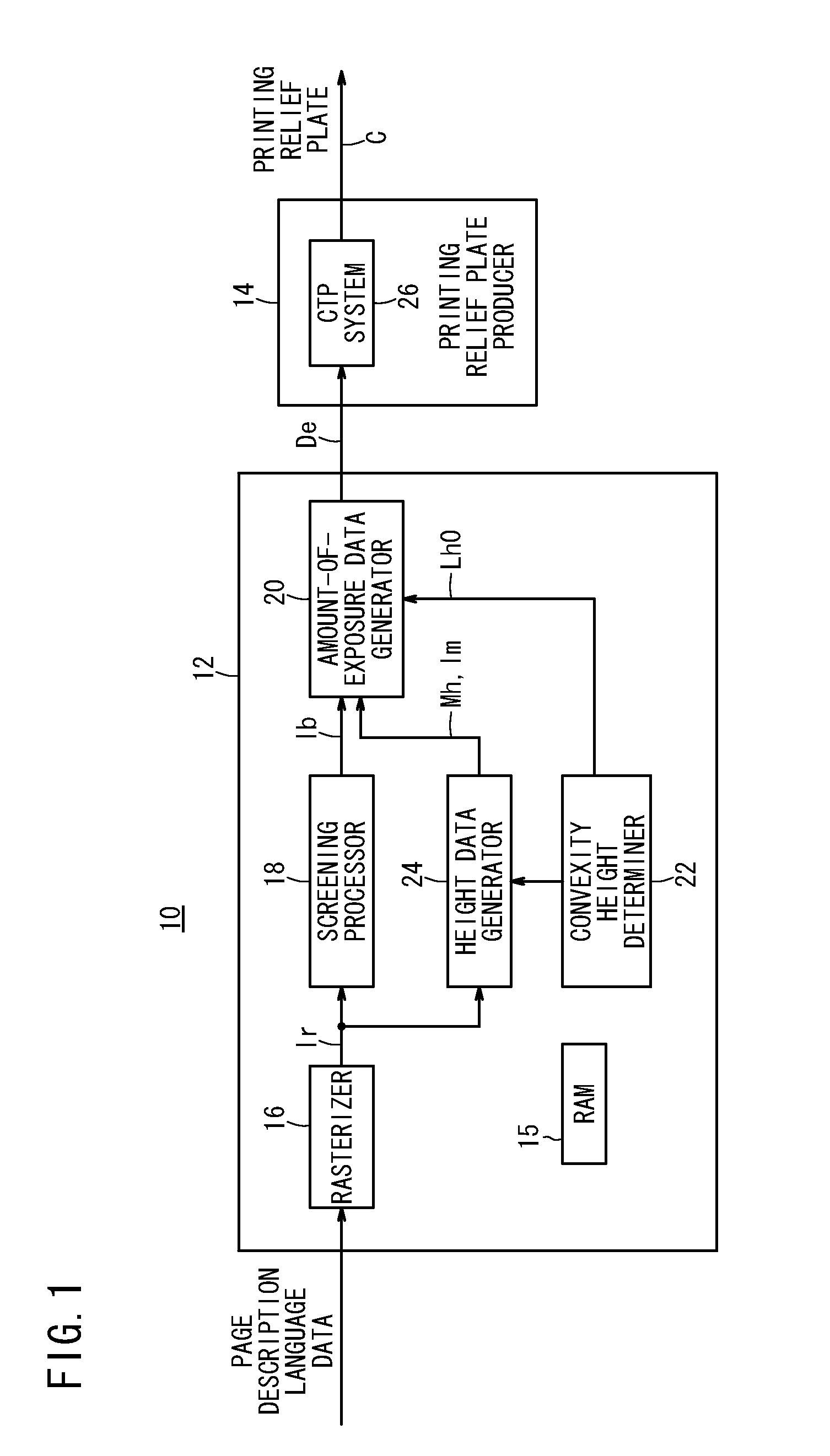Printing relief plate producing apparatus, system, method, and recording medium
a printing relief plate and producing apparatus technology, applied in printing, instruments, visual presentation, etc., can solve the problems of printing density shift, high dot gain and graininess, engraving accuracy and print reproducibility, etc., and achieve the effect of stable printing density
- Summary
- Abstract
- Description
- Claims
- Application Information
AI Technical Summary
Benefits of technology
Problems solved by technology
Method used
Image
Examples
first embodiment
[0075]First, a printing relief plate producing apparatus according to the present invention will be described in detail below with reference to FIGS. 1 through 13.
[0076]FIG. 1 is a block diagram of a platemaking apparatus (printing relief plate producing apparatus) 10 according to a first embodiment of the present invention. As shown in FIG. 1, the platemaking apparatus 10 basically comprises a RIP (Raster Image Processor) 12 and a printing relief plate producer 14.
[0077]The RIP 12 includes a rasterizer 16, a screening processor (binary image data generator) 18, an amount-of-exposure data generator 20, a convexity height determiner 22, and a height data generator 24.
[0078]The rasterizer 16 converts PDL (Page Description Language) data, such as PDF (Portable Document Format) data, PS (PostScript: registered trademark) data, or the like, which represent vector images of printed documents edited using a computer or the like, into raster image data Ir.
[0079]The raster image data Ir comp...
second embodiment
[0150]FIG. 14 is a block diagram of a platemaking system 310 (printing relief plate producing system) 310 according to the present invention. As shown in FIG. 14, the platemaking system 310 basically comprises a RIP (Raster Image Processor) 312 and a printing relief plate producer 314.
[0151]The RIP 312 includes a rasterizer 16 and a screening processor 18. The printing relief plate producer 314 includes an amount-of-exposure data generator 320, a convexity height determiner 322, a changing data generator 324, an amount-of-exposure data changer 325, and a CTP system 26. Among the components of the printing relief plate producer 314, the amount-of-exposure data generator 320, the convexity height determiner 322, the changing data generator 324, or the amount-of-exposure data changer 325 may be implemented by a CPU (not shown), which executes a program read from a RAM 315 (recording medium).
[0152]The RIP 312 according to the second embodiment differs from the RIP 12 (see FIG. 1) accord...
PUM
 Login to View More
Login to View More Abstract
Description
Claims
Application Information
 Login to View More
Login to View More - R&D
- Intellectual Property
- Life Sciences
- Materials
- Tech Scout
- Unparalleled Data Quality
- Higher Quality Content
- 60% Fewer Hallucinations
Browse by: Latest US Patents, China's latest patents, Technical Efficacy Thesaurus, Application Domain, Technology Topic, Popular Technical Reports.
© 2025 PatSnap. All rights reserved.Legal|Privacy policy|Modern Slavery Act Transparency Statement|Sitemap|About US| Contact US: help@patsnap.com



